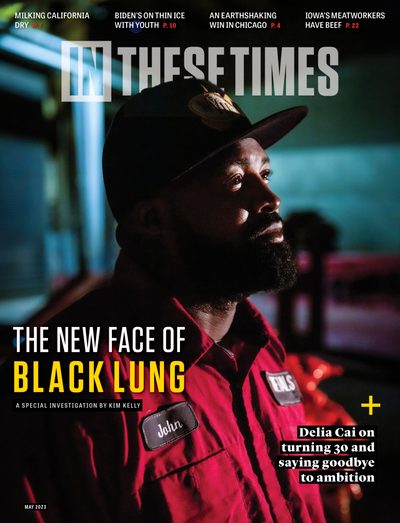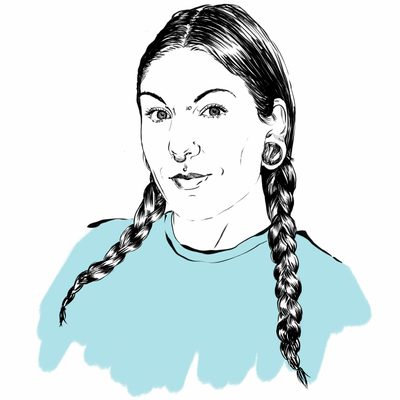The Young Miners Dying of “An Old Man’s Disease”
Black lung is completely preventable. And it’s on the rise again.
Kim Kelly
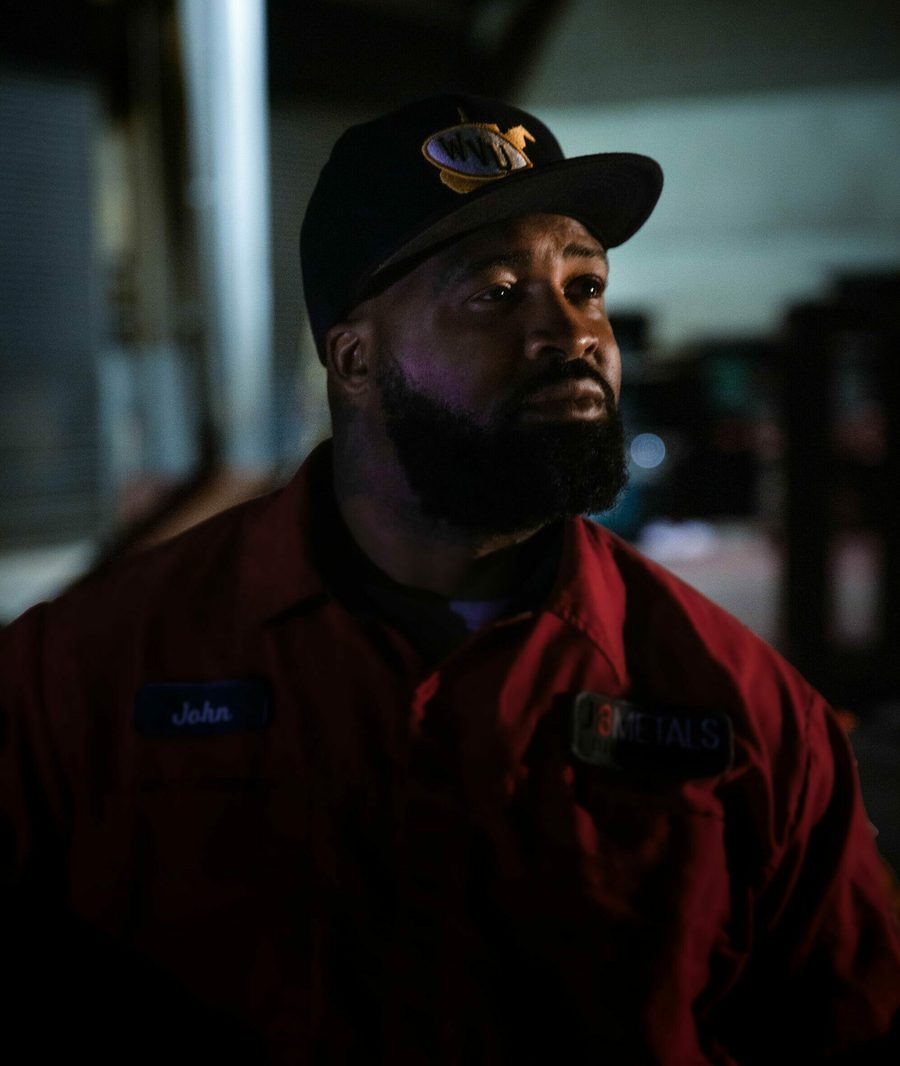
“Is that the wind you hear howlin’ through the holler?
Or the ghost of a widow that cries?
For every man that died for a coal company dollar
A lung full of dust and a heart full of lies”
—“It’s About Blood,” Steve Earle (2020)
Adaptation is a way of life for John Moore. He’s worked construction, run a wig shop and now promotes concerts. The wig shop idea came to him because his middle daughter was having trouble styling her thick, curly hair. He didn’t know much about wigs, or hair in general, so he learned and started turning a profit soon after the grand opening. That’s the kind of man he is — someone who’s always looking out for the next opportunity, the next chance to make it.
When we meet, Moore is wearing a black puffer jacket, a black durag, work boots and a cautious smile. He’s soft-spoken but firm, and he lights up when he talks about his wife and three kids. At a glance, he seems strong, the kind of person who can win an arm-wrestling contest or help you move — like a man with a lot of living left to do.
But instead, Moore, at only 42, is dying of black lung disease.
You see, Moore’s résumé also includes a few lines familiar to many people in Central Appalachia. He spent about 11 years running coal and clearing debris in the mines of Southern West Virginia. During that time, a cruel disease took up residence inside his chest cavity. Now, it is slowly destroying him from the inside.
He’s not alone. Across Central Appalachia — and specifically Kentucky, Virginia and West Virginia — coal miners are struggling to breathe. Many of them aren’t much older than Moore — and many are much younger. Journalist Howard Berkes investigated the spike in a series for NPR in 2012, and multiple studies before and after have shown black lung (known more formally as coal workers’ pneumoconiosis, or CWP) has been on the rise for the past decade.
“It was a big issue in 2009, 2010,” explains Noemi Hall, an epidemiologist in the National Institute for Occupational Safety and Health (NIOSH) based in Morgantown, W.Va. “But as time went on, it continued to increase in such a dramatic fashion that, when you look at some of the figures we’ve produced, it just seems unbelievable.”
Not only has black lung become more prevalent, but it has been impacting younger miners and those who have spent less time underground much more quickly and much more severely, according to recent data NIOSH shared with In These Times. In Kentucky and West Virginia, for example, black lung afflicts more than 1 in 8 coal miners who have been working underground for 20 – 24 years. That rate has risen from about 1 in 30 a decade ago. Rates are also creeping upward among those who’ve worked underground just 15 – 19 years — workers who may be as young as 33. Workers in their 30s and 40s are now making their way to the same black lung clinics that served their parents or grandparents and fighting the same battles against red tape and corporate malfeasance to win black lung benefits.
The primary cause is clear: It’s the silica dust filling the air as today’s miners have to dig through more and more layers of silica-laden rock to reach those storied Appalachian coal seams, which have been worn thin by centuries of prolific mining and are now much more difficult to access, despite (or because of) the heavy machinery that dominates the work. As one black lung clinic worker tells me: “Their daddies and granddaddies got all the good coal; now they’re left with the trash.”
Silica is 20 times more toxic than coal dust, and it is a silent killer. As the workers break through the layers of rock, silica dust clogs the air; it gets into their eyes, their noses, their throats and, eventually, their lungs. There, it bores into the tissue, scarring the delicate organs and causing irreparable damage. Eventually, it kills them. The coal dust that smudges miners’ skin, clings to their eyelashes (it’s not Maybelline) and causes coal workers’ pneumoconiosis is no longer the primary respirable hazard facing America’s coal miners; it’s “excessive amounts of silica,” Hall confirms.
Considering the state of the modern coal industry, the decline of unions in Central Appalachia and the geological realities of the region, an entire new generation of coal miners is at risk of drowning in their own lungs.
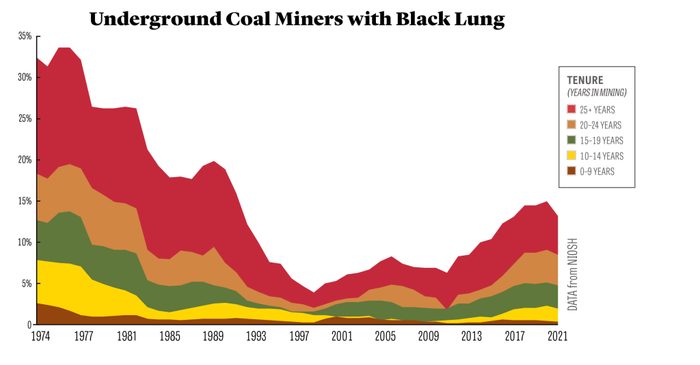
Ghosts in the tunnels
When most people hear the words “black lung,” their minds tend to switch into black-and-white (“I thought that was something from, like, the 1800s!”). It’s all too often treated as a punchline (thanks, Zoolander), a relic, or, at best, an issue that solely affects old people. But in the heart of Central Appalachia, black lung is all too real, and haunts the ancient hills. To those who have grown up in its shadow, seen it claim their family members and perhaps felt it in their own labored breathing, black lung has remained a hovering threat.
“Black lung” can encompass a set of illnesses and complications, from industrial bronchitis and silicosis to lung cancer and chronic obstructive pulmonary disease. But when organizations and government agencies issue studies and reports on the crisis, they zero in on coal workers’ pneumoconiosis (CWP), the only disease formally recognized by the medical establishment as black lung, once known as “miner’s consumption” or “coal miner’s lung” (or, in the hard rock mines out West, “the jackhammer laugh”).
And they’re increasingly seeing CWP in its most severe form. There is no coming back for patients who are diagnosed with progressive massive fibrosis (PMF), distinguished by the appearance of nodules (hard masses larger than 1 centimeter) within the lungs. At this stage, there is so much dust and so much scarring that the lungs begin to break down on their own. It is a heartless disease, one that catches hold of its victim and never lets go until they draw their last agonized breath. The only treatment is oxygen and, for many, prayer. Death may come slowly, but it always comes. A black lung diagnosis shortens a patient’s lifespan by an average 12.6 years.
Like many younger miners, Moore never gave much thought to the specter of black lung. He grew up in Stanaford, W.Va., the site of a pivotal moment in the 1902-1903 New River coal strike, graphically recounted in famed labor agitator Mother Jones’ autobiography, when armed deputies gunned down seven striking miners in their beds. But Moore didn’t feel much of a connection to the profession’s regional history or culture. He was simply a man with a growing family to care for, who wanted to upgrade from the city job that had paid him $5.15 per hour for too many years.
He began his career underground in 2005, making $18 per hour. “The dollars just made sense,” he tells me. “It takes you from poverty to a level where you don’t have to struggle if you manage your money right.” The dust that clung to his work boots felt like an annoyance, not a threat. As a result, his diagnosis came as a shock; he had assumed his asthma was just worsening. “And then I actually went to the hospital and got X-rays on my chest, and the doctor came back and was like, ‘You might want to see a black lung specialist.’ … The [specialist] came back after doing so many tests and he was like, ‘You might want to get an attorney.’”
That attorney was Sam Petsonk. If a coal miner is diagnosed with black lung in southern West Virginia, the empathetic, fast-talking attorney is probably going to be one of the first people they call. Petsonk has an impressive résumé, with time in D.C. shaping federal policy impacting coal miners as well as extensive community development projects at home, but above all he has devoted himself to fighting tooth-and-nail against the coal companies whose actions have endangered his clients’ lives. “When a client comes in with a medical death sentence due to illegal dust exposure, and that man has children who are younger than my little babies, and I’m only 38, it’s heartbreaking,” Petsonk tells me. “And it’s embarrassing that our health and safety laws have failed to prevent the coal industry from tearing up people’s lives like this.”
Petsonk helps miners diagnosed with CWP access black lung benefits and advises them of their rights under Part 90 of the Federal Mine Safety and Health Act of 1977. Part 90 lets them transfer to less dusty parts of the mine with no penalty — an increasingly popular option among younger miners who want to keep earning money instead of dealing with the labyrinthine black lung benefits system. “Even though they have huge scarring in their lungs, that lung tissue is young enough and healthy enough that they can kind of power through,” Petsonk explains.
Ben Cook, a current West Virginia coal miner and United Mine Workers of America (UMWA) member who serves on his local’s mine safety committee, gave me a ride to meet Moore at Petsonk’s wood-paneled office in downtown Oak Hill, W.Va. When we left, Cook told me he’d found it “alarming” to meet someone as young as John who was in such bad shape, and that over the past five years, he’s noticed a difference in his own breathing and lung capacity. He’s in his mid-30s, and is a third-generation coal miner knowledgeable about the risks and well-versed in safety procedures. He’s also a fierce advocate for his coworkers and a poster child for mine safety. But the 12 years he’s spent underground have taken their toll anyway. “I haven’t been diagnosed with black lung, so I can’t guarantee that I have it,” he says. “But you can just feel a difference in your breathing. It’s more labored.”
Cook, with his nuanced understanding of the threat, is a bit of an anomaly. Among younger miners, particularly those like Moore who don’t come from union families or coal-mining backgrounds, the idea that black lung is “an old man’s disease” has proven difficult to shake.
“Too many young guys don’t see it as an immediate threat,” Cook says. He and other miners I spoke to mentioned the difficulty of convincing coworkers to wear full protection equipment, including the heavy, cumbersome respirators meant to protect them from dust. “If I was to tell them, ‘I’m gonna push you out from the moving car,’ they’re gonna tell me no. … But it seems like when you’re telling them about something that may hurt them 30 years down the road, they think, ‘Well, I’ve got time to worry about that later.’”
But as he and many miners and other experts have pointed out, if the proper dust controls were followed to the letter, the dust wouldn’t be there in the first place.
“If ventilation has kept up and it’s kept up right, you probably don’t even need a mask,” says Josh King, who worked in both union and nonunion underground coal mines between 2003 and 2017 and is a representative for UMWA Region 2. “But these companies, they want big numbers and they feel that sometimes you just gotta cut a corner.”
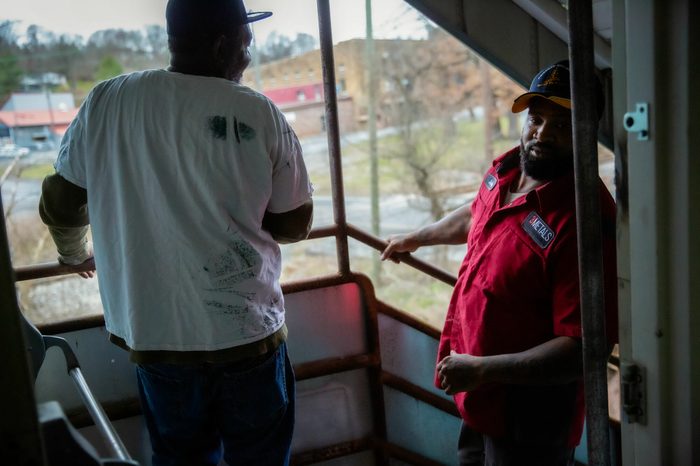
“How little do the great ones care, who sit at home secure
What hidden dangers colliers dare, what hardships they endure,
The very fires their mansions boast to cheer themselves and wives
Mayhap were kindled at the cost of jovial collier’s lives”
—“Down in a Coal Mine,” JB Geoghegan (1872)
Regulatory hopes and failures
Mine operators have been flouting federal mine safety regulations for decades. As journalist Chris Hamby reported in 2012 and expanded upon in his 2020 book, Soul Full of Coal Dust: A Fight for Breath and Justice in Appalachia, unsavory coal operators manipulate dust samples to skirt their responsibilities, using tricks and loopholes to magic dirty mines clean. While miners I spoke with say that some owners do their best to mitigate the risks and keep their employees safe, those examples were few and far between.
“There’s no such thing as a good coal company; some are just worse than others,” according to King. “The law lets them take so many samples and then they can choose the best ones. … I remember working nonunion; when the federal government would come to run the surveys, the company would always send extra help on the bolt machines or on the scoops to get a cleaner reading than what normally they would. … They’ll do little stuff like that to not have a really accurate reading.”
Regulations do exist. In addition to Part 90, miners are afforded other strong protections under the 1977 Mine Act (which built upon an act passed in 1969). The federal Mine Safety and Health Administration (MSHA) is tasked with enforcing the act and expanding its safety and health rules. Theoretically, MSHA should be a bad coal boss’s worst nightmare. But MSHA has been heavily criticized for going easy on violators. Hamby found that, between 2000 and 2011, the agency received more than 53,000 samples from underground coal miners that showed overexposure to coal dust, but only about 2,400 citations were issued.
King suggests the MSHA needs more staffers — and more teeth — to properly go after violators. Cook’s glum assessment: “Whatever the agencies say they’re enforcing, obviously, is not working.”
MSHA has long known that silica is a problem, and its medical risks are no secret. The first recorded death from a silica-related respiratory disease came in 1672, when Dutch physician Isbrand van Diemerbroeck examined a group of stonecutters who died of “asthma” and found that “to cut their lungs was like cutting a mass of sand.” In 1974, NIOSH recommended a silica standard of no more than 50 micrograms per cubic meter during any 10-hour shift of a 40-hour work week, noting that “compliance … should prevent adverse effects of crystalline silica.” It’s hard not to think this current crisis could have been prevented, or mitigated, if only someone had listened.
In 2016, the Occupational Safety and Health Administration (OSHA) did implement the 50-microgram standard, but OSHA doesn’t have jurisdiction over coal mines. MSHA’s standard has been 100 micrograms since 1969, and mines can’t be penalized for violating the silica limit alone — it’s tied to the larger coal dust standard. As a result, coal miners today — many of whom are exposed to just as much silica dust as construction workers, non-metal miners and maritime workers — are subject to an older, much higher limit that has failed to protect them from the ravages of silica.
In 2019, the House Committee on Education and Labor held a hearing titled “Breathless and Betrayed: What Is MSHA Doing To Protect Miners From the Resurgence of Black Lung Disease?” in which several congresspeople questioned the agency’s inactivity. Rep. Alma Adams (D-N.C.) opened by noting how “mine safety regulators and the industry have failed in their jobs to protect miners from this completely preventable occupational disease.” Bruce Watzman, a former member of the industry lobbying group the National Mining Association, defended MSHA’s record, saying the agency “does as good a job as it can.”
UMWA President Cecil Roberts spared MSHA itself his trademark fiery delivery, instead aiming squarely at the federal government. “Congress needs to take action to require the Federal Mine Safety and Health Administration to promulgate an emergency temporary standard that recreates a permissible exposure limit for silica,” he told the committee. “Every committee that has ever been established in this Congress to deal with this, have failed to do so, so I hope today that we take some action to protect these miners.”
They didn’t. That year, MSHA requested testimony and public comment on a proposed rule but didn’t go any further. Meanwhile, more than 1,000 miners and former miners die from the disease annually. Some worry MSHA has missed its moment in stemming what’s now a full-blown crisis.
“Before 2010, we rarely encountered miners diagnosed with complicated coal workers’ pneumoconiosis or progressive massive fibrosis,” Wes Addington, of the Appalachian Citizens’ Law Center, a black lung victims’ advocacy group, wrote in a 2021 petition. “Since that time, scores of miners have come through our doors with very severe disease. They are younger and sicker than ever before and have been robbed of the life they hoped would follow their careers in the coal mines. A silica standard is long, long overdue.”
MSHA faces issues that plague many other small federal agencies — understaffing and a subjectivity to the political winds that blow in and out of Washington. An enormous amount of what any given agency actually gets done depends on who’s sitting in the Oval Office and for how long.
“During the Obama administration, they basically ran out of time,” Adam Banig, the UMWA’s director of governmental affairs, tells me. “They were working on [a silica rule], and it just didn’t get out soon enough before the end of the presidency and then the Trump administration never did anything with it.” Banig points out Trump installed a former coal executive, David Zatezalo, to lead MSHA. Zatezalo spent his time there examining ways to make health regulations around coal and silica dust “less burdensome” for mine operators. “It’s just a vast difference in the two parties, and who they listen to,” Banig explains.
Right now, the political winds may be blowing in the miners’ favor. President Joe Biden appointed Chris Williamson, a West Virginia native with roots in coal country, as assistant secretary of labor for mine safety and health administration on April 11, 2022, and Williamson has named the fight against silica as his top priority.
During the first few months of his tenure, MSHA announced plans to implement a new silica enforcement initiative that includes spot inspections of mines and reviews of ventilation plans, and it began promulgating a new regulation to address silica exposure.
Depending on how the next presidential election goes, Williamson may have only a couple of years to get this all done. Scholar Barbara Ellen Smith, author of Digging Our Own Graves: Coal Miners and the Struggle Over Black Lung Disease, has little faith in an agency whose leadership is as politically impermanent as MSHA’s: “I hate to say it, but I think black lung is going to be eliminated when the coal industry shuts down, given the current state of the union.”
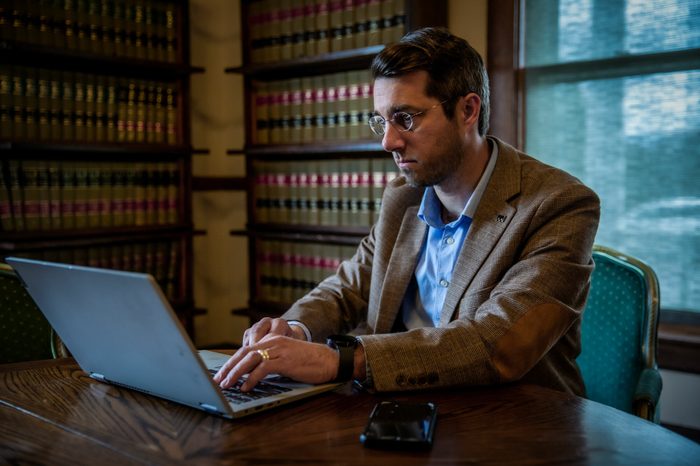
“Someday when I die and to Heaven I go
To Heaven the land of my dreams
I won’t have to worry about losin’ my job
To bad times and big machines”
—“Coal Tattoo,” Billy Ed Wheeler (1963)
Death haunts a dying industry
The industry itself is on life support. Despite the coal lobby and its pet politicians’ best efforts, and a brief bump in demand in 2021, coal consumption for electricity generation continues to fall. The rise of natural gas fracking and the growing shift toward renewable energy have robbed coal of its former luster. Metallurgical coal, the soft bituminous variety used to manufacture steel that lines the Central Appalachian coal seams, will have a longer shelf life because of the demand from rapidly industrializing nations like China and India.
Miners will continue to be able to find work there — at least until mine operators figure out how to automate them out. Even before the green energy transition, coal mining jobs were disappearing. The number of coal miners peaked in 1923, with 862,536 — about 2% of the U.S. workforce. In the past decade, it’s dropped from 79,300 to 41,100.
In a stroke of bitter irony, the marks of progress that stole their jobs are a major reason behind the uptick in silica exposure; the machines can dig further faster than any human, and the air fills with deadly dust that much quicker. What once took a crew two weeks to dig out now takes less than 24 hours with a longwall or continuous miner machine.
To scratch out the remaining coal, coal companies have also turned to the old, abandoned metallurgical mines hollowed out by steel companies decades ago, bringing in workers to clean them up and take a crack at digging out the subprime coal that’s left. John Moore worked in one of these “mine rehabilitation projects” in Raleigh County, West Virginia. These sites are classified as construction projects — not mines — so MSHA only conducts inspections twice per year. “They hire contractors, just like John, people that have no mining experience, and they have to learn on the fly, and they wind up breathing a lot of sandstone and coal dust,” Petsonk explains. “A couple of years of exposure in that kind of environment can leave you with totally disabling, progressive, massive fibrosis and heart failure, which is what John’s got.”
Coal may be dying, but it’s also taking an entire new generation of miners out along with it. Coal operators will continue asking the workers who remain to dig further, faster and through more rock to extract what little coal remains.
“[Operators are] just trying to get the buck that they can while they can, because they’re not stupid,” Smith says. “They know that their game is up.”
Williamson at least seems genuine in his desire to tamp down silica dust. Since we first spoke in summer 2022, MSHA has rolled out a new suite of digital initiatives to educate miners on their rights.
On January 18, MSHA’s new silica standards rule moved to the Office of Management and Budget, where it will soon be made available for public comment. If various federal bureaucratic hurdles are successfully cleared, the standard will be put into place and coal miners might be able to breathe a little easier. As experts and advocates have been saying for decades, it is entirely possible to minimize coal dust and silica exposure in underground mines by using more efficient rock-cutting methods. Other techniques include high-quality ventilation controls with HEPA filters, vacuums, dust collectors and wet methods (such as “flooded-bed scrubbers,” powerful water sprays to tamp down dust), along with the use of face masks and respirators.
Those extra precautions, which can be time-consuming and slow production, tend to be unpopular with mine bosses, and MSHA’s new initiative includes increased oversight of mine operators and more aggressive dust sampling in mines hit with previous violations. There’s no method to collect real-time data on silica exposure, creating opportunities for skullduggery. NIOSH is working to address the issue.
“The important part of all this, especially from the MSHA standpoint, is: This illness is entirely preventable if mine operators are following the law and putting the correct engineering controls in place,” Williamson says. “The miner also has to feel like he or she can report health hazards and do so without fear of retaliation, which is where MSHA comes into play.”
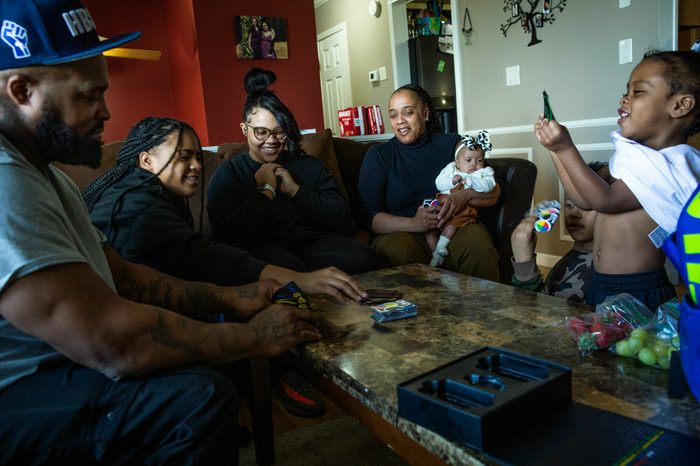
“Black lung, black lung, oh your hand’s icy cold
As you reach for my life and you torture my soul
Cold as that water hole down in that dark cave
Where I spent my life’s blood diggin’ my own grave”
—“Black Lung,” Hazel Dickens (1973)
The union difference
It’s also where a union can come in handy. Moore worked both union and nonunion mines, and it’s impossible to tell if a union card could have saved his lungs, but union mines are known to be safer than nonunion. As Ben Cook explains, the union can preempt dangerous mining conditions by its involvement in the mine’s ventilation planning and by forming mine safety committees tasked with monitoring the workplace and advocating for safety.
Unions also create a necessary bulwark against profit-hungry coal bosses. Many a coal boss has happily soaked his hands in blood if it meant staying in the black. “[In a union], I can say at any time I have a right to a safe workplace and I can remove myself from the unsafe environment,” explains Cook. “I don’t have to breathe that dust.”
“When you break the union, it’s the Wild West in terms of what employers can ask of workers,” Barbara Ellen Smith tells me. “And we’re seeing that — numerous, numerous miners talking about being required to work overtime, double shifts, their lungs get no break, all kinds of falsification of dust sampling, really unhealthy procedures in terms of ventilation. … I have described to retired miners who worked union what current miners have described to me, and they are just aghast — they can’t believe it. In the absence of a union, the companies are just really doing as they wish.”
There are still a few union mines in West Virginia and southern Virginia, but Kentucky’s are entirely nonunion. It’s probably not a coincidence that miners I spoke to in union strongholds like Alabama, Pennsylvania and even Utah haven’t seen anything like the black lung numbers consuming their brethren in Appalachia.
Until the coal companies start doing everything within their considerable power to protect their workers, young coal miners will keep knocking on Sam Petsonk’s door. One fact that nearly everyone I spoke to for this piece emphasized — angrily, wearily, hopefully — is that black lung and all of its attendant horrors are completely preventable. With proper engineering controls, full compliance with safety regulations and up-to-date exposure standards, no one would have to live like this, or die like this.
It is a choice being made, and it is a terrible way to go.
My friend Danny Whitt, recording secretary of United Mine Workers Local 1440 in Matewan, W.Va., is a retired Mingo County coal miner who was diagnosed with black lung the year I was born, 1988. He’s seen many of his former coworkers succumb to the disease and has had about enough.
“I’ve watched people die of black lung, and I’ll just tell you, it’s the awfulest sight you’ve ever seen in your life,” he tells me when we bump into one another at a 2022 UMWA convention. “It’s like taking a fish out of water and just laying them on a table and watching them gasp for breath. And a coal miner, if he dies with black lung complications, it’s a horrible death. He just smothers.”
For now, Moore is doing his best by eating well, going to the gym religiously and taking long visits to the sauna — “just to try to basically stay alive,” he says. When we spoke, Moore stressed he wants other young miners to get out of the dust before it’s too late. “Learn more about the workplace, and if you got any type of equipment to protect yourself, use all the equipment that you can,” he says. “If you don’t, then you can end up like me.”
As far as Moore’s concerned, even with his diagnosis and the struggles ahead, he’s lived an “all right life,” because of his family. He radiates with pride as he tells me his eldest is now 21 and working as a dental assistant. “I just want to set up things more for my family now to where they won’t have to go through the struggle I’ve gone through …
“We was born to die, you know? … You’ve just got to feed your family and do what you got to do and hope and pray for the best.”
This story was supported by a grant from the Leonard C. Goodman Center for Investigative Reporting.
Kim Kelly is a freelance journalist and author based in Philadelphia, PA. She is a labor writer for In These Times, a labor columnist at Teen Vogue and Fast Company, and regularly contributes to many other publications. Her first book, FIGHT LIKE HELL: The Untold History of American Labor, is now available from One Signal/Simon & Schuster. Follow her on Twitter at @grimkim and subscribe to her newsletter, Salvo, here.
